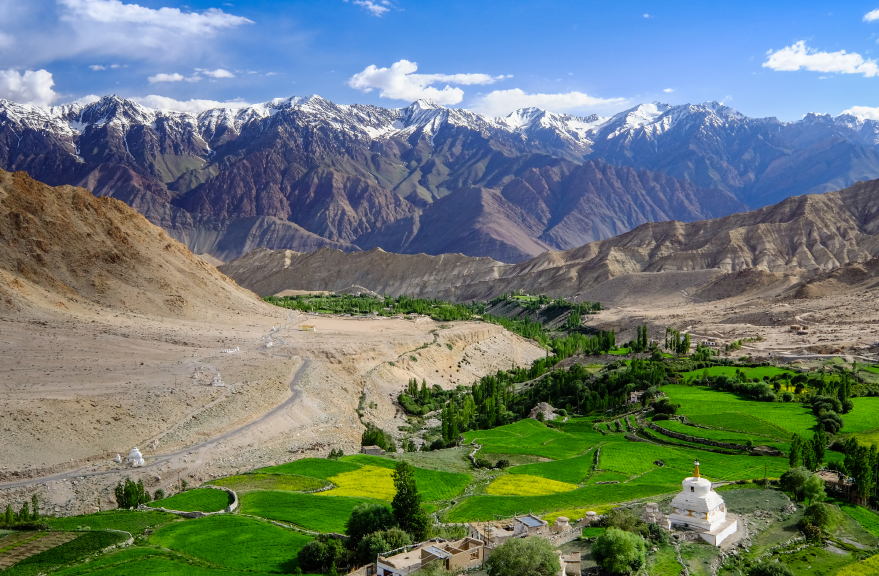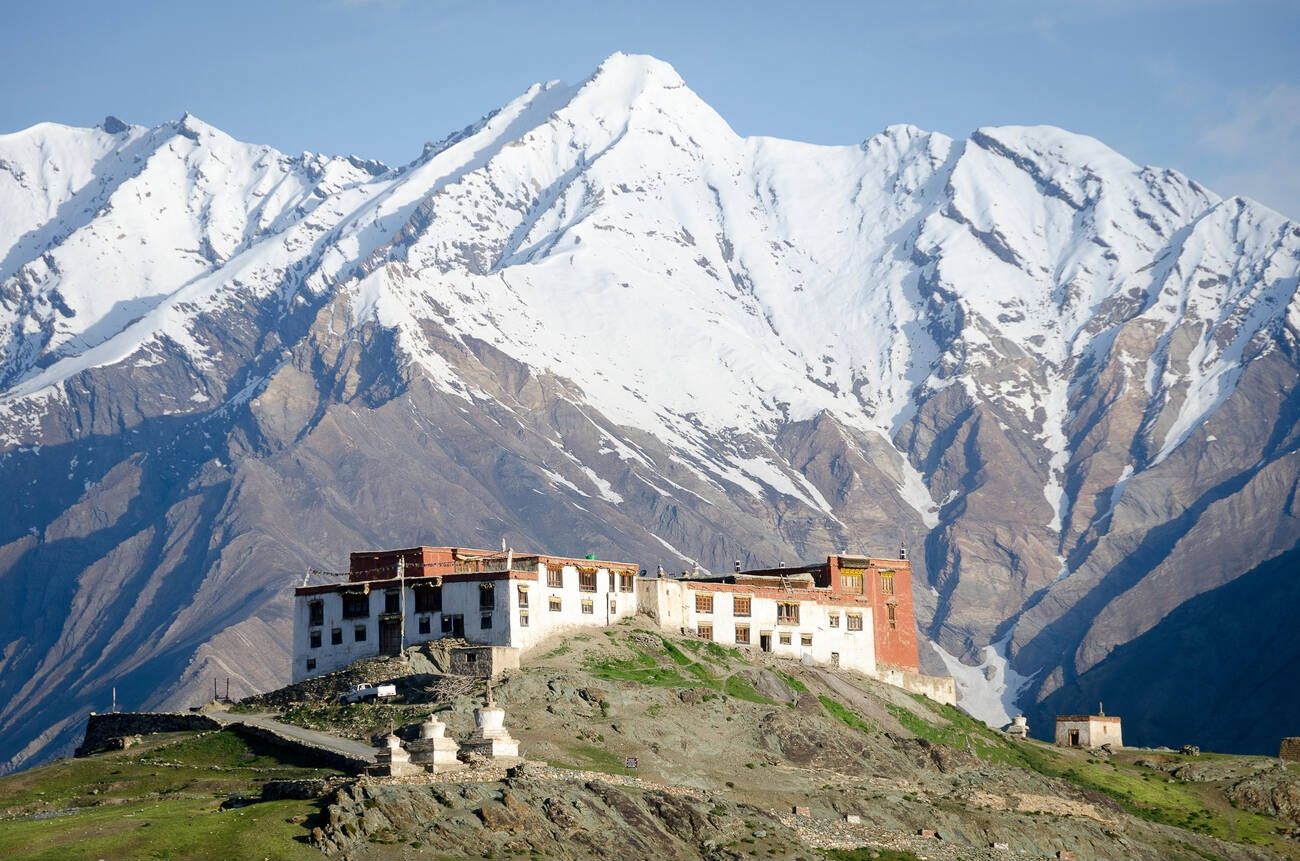views

Ladakh, the land of high passes and timeless spirituality, is a dream destination for travelers seeking adventure, culture, and peace. Tucked away on the banks of the Indus River, Alchi Monastery in Ladakh stands as a testament to the region’s deep-rooted Buddhist heritage and artistic brilliance. Unlike other hilltop monasteries, Alchi’s serene setting and ancient murals offer a unique window into Ladakh’s past.
After four lines, it’s time to dive into your essential guide to alchi monastery in ladakh. If you’re planning a trip to ladakh, make sure Alchi is on your itinerary—this ancient site will leave you inspired and awestruck.
Why Visit Alchi Monastery in Ladakh?
Alchi Monastery is not just one of Ladakh’s oldest religious sites; it’s a living museum of Himalayan art and architecture. Built between the 10th and 11th centuries by the legendary translator Rinchen Zangpo, Alchi is famed for its exquisite murals, intricate woodwork, and a tranquil atmosphere that feels worlds away from the rush of modern life.
What sets Alchi apart is its location—nestled on flat ground in a lush, apricot-filled valley, rather than perched on a mountain. This makes it easily accessible and perfect for a leisurely exploration. The monastery complex is actually a group of temples and shrines, each adorned with vibrant paintings and sculptures that reflect a fascinating blend of Tibetan and Kashmiri styles.
Best Time to Visit Alchi Monastery
-
May to September: The weather is pleasant, the roads are open, and the valley is at its greenest. This is the ideal season for exploring Alchi and the surrounding villages.
-
October to April: The region gets cold and some guesthouses may close, but the monastery is open year-round. Winter visits are quieter and offer a unique, snow-dusted charm.
How to Reach Alchi Monastery
-
From Leh: Alchi is about 65-70 km west of Leh, making it a perfect day trip or overnight stop. The drive takes around 2 hours along the scenic Leh-Srinagar highway, passing through picturesque villages and alongside the Indus River.
-
By Public Transport: Buses and shared taxis run from Leh to Alchi, but hiring a private car or bike gives you the freedom to stop at other attractions along the way.
-
Nearby: The village of Alchi is close to other historic sites like Likir Monastery and Basgo Palace, making it easy to combine several stops in one journey.
Entry Fee and Timings
-
Entry Fee: There is a nominal entry fee for visitors, which helps with the monastery’s upkeep and preservation.
-
Timings: Typically open from early morning until late afternoon. It’s best to visit in the morning for a quieter experience and soft natural light for photography.
What to See at Alchi Monastery
1. The Dukhang (Assembly Hall):
The heart of the monastery, where monks gather for prayers and rituals. The hall is adorned with ancient wall paintings of Buddhas, Bodhisattvas, and intricate mandalas.
2. Sumtsek Temple:
A three-story marvel built of loam and stone, featuring a massive statue of Maitreya Buddha and beautiful clay sculptures of Avalokiteshvara and Manjushri.
3. Manjushri Temple:
Dedicated to the Bodhisattva of wisdom, this temple is filled with vibrant frescoes depicting Buddhist cosmology and mythological tales.
4. Translator’s Temple (Lotsawa Lakhang):
Honoring Rinchen Zangpo, the temple’s founder, with unique paintings and spiritual motifs.
5. Chortens and Stupas:
Scattered across the complex, these sacred structures add to the spiritual ambiance and are often decorated with prayer flags.
6. Wall Murals:
Alchi’s murals are among the oldest in Ladakh, blending Tibetan Buddhist iconography with Kashmiri artistic influences. Don’t miss the “thousand Buddhas” wall—an awe-inspiring sight.
The Village of Alchi: A Peaceful Retreat
Alchi village itself is a tranquil oasis, surrounded by green fields and apricot orchards. The gentle pace of life, friendly locals, and riverside setting make it an ideal place to relax after exploring the monastery. Many travelers choose to stay overnight in a local guesthouse or homestay for an authentic Ladakhi experience.
Things to Do Near Alchi Monastery

-
Stroll Along the Indus River: Enjoy the peaceful riverside and watch the sunset over the valley.
-
Visit Likir Monastery: Another historic site just a short drive away, known for its giant outdoor Buddha statue.
-
Explore Basgo Palace: A dramatic hilltop ruin with panoramic views and fascinating history.
-
Sample Local Cuisine: Try Ladakhi specialties like thukpa, momos, and apricot-based treats at village cafes.
Practical Tips for Visiting Alchi Monastery
-
Dress modestly and respect the monastery’s sacred spaces.
-
Photography is allowed in the complex but may be restricted inside certain temples—always ask first.
-
Carry cash for entry fees and local purchases, as card facilities are limited.
-
Combine your visit with a tour of nearby villages for a richer cultural experience.
Nyoma Monastery in Ladakh: A Hidden Gem
If you’re drawn to the quieter, less-traveled corners of Ladakh, Nyoma Monastery in Ladakh is a must-visit. Located in the remote Changthang region, Nyoma is known for its peaceful setting, spiritual energy, and panoramic views of the high-altitude landscape.
Why Visit Nyoma Monastery?
-
Solitude and Serenity: Nyoma is far from the tourist crowds, offering a chance to connect with Ladakh’s spiritual side in a tranquil environment.
-
Unique Architecture: The monastery features traditional Ladakhi design, prayer halls, and vibrant frescoes.
-
Cultural Encounters: Meet local monks, learn about Tibetan Buddhism, and witness daily rituals in an authentic setting.
Best Time to Visit Nyoma Monastery
-
May to September: The weather is milder and the roads are accessible. This is the best window for exploring Nyoma and the Changthang plateau.
How to Reach Nyoma Monastery
-
From Leh: Nyoma is about 180 km southeast of Leh. The journey takes you through breathtaking landscapes, past lakes, and nomadic settlements.
-
Permits: The area is close to the Indo-China border, so an Inner Line Permit is required—arrange this in Leh before your trip.
Where to Stay
-
Accommodation options are basic, with a few guesthouses and homestays in Nyoma village. For a truly local experience, consider staying with a Ladakhi family.
What Not to Miss
-
Attend a Puja: Experience the spiritual rhythm of monastic life by joining a morning or evening prayer session.
-
Explore the Changthang Region: Nyoma is a gateway to high-altitude lakes, hot springs, and the unique culture of Ladakh’s nomads.
Sample Itinerary: Alchi and Nyoma Monastery
-
Day 1: Arrive in Leh, acclimatize, explore the local market.
-
Day 2: Day trip to Alchi Monastery, stroll the village, visit Likir Monastery.
-
Day 3: Explore Basgo Palace, relax by the Indus River.
-
Day 4: Journey to Nyoma, visit the monastery, experience local life.
-
Day 5: Optional: Continue to Tso Moriri Lake or return to Leh.
Final Thoughts

Alchi Monastery in Ladakh is a treasure trove of art, history, and spirituality—an essential stop on any trip to Ladakh. Pair it with the peaceful Nyoma Monastery in Ladakh for a journey that blends culture, tranquility, and the raw beauty of the Himalayas. Whether you’re a seeker, an explorer, or simply a lover of beautiful places, Ladakh’s monasteries promise memories that will last a lifetime.



Comments
0 comment